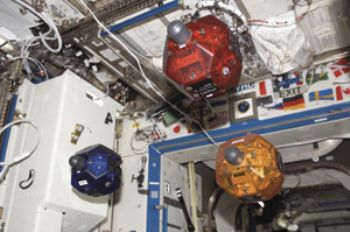
NASA is to add Google smart-phones with next-generation 3-D sensing technology to its small football-sized robots developed for the International Space Station.
It is envisaged that the Spheres — Synchronized Position Hold, Engage, Re-orient, Experimental Satellites —could eventually carry out chores for astronauts or even handle risky duties outside the ISS.
Inspired by a Star Wars scene where Luke Skywalker uses a light-sabre to spar with a hovering globe, they can be guided around the space station’s micro-gravity interior, propelled by tiny blasts of CO2.
When NASA first sent the Spheres to the space station in 2006, they were capable of precise movement but little else. In 2010, engineers at its Ames Research Center in California decided to make them ‘smarter’.
Project manager Chris Provencher said: “We wanted to add communication, a camera, accelerometers and other sensors. As we were scratching our heads thinking about what to do, we realised that the answer was in our hands — our smart-phones!”
The team bought a host of phones from Best Buy, adding extra batteries and a shatter-proof display. The astronauts then used Velcro to attach them to the Spheres.
This proved relatively successful, but there was room for improvement, so Google was consulted; this resulted in a motion-tracking camera and infra-red depth sensors that detect sharp angles inside the space station and create a 3-D map that helps the Spheres to navigate more easily.
Mr Provencher added: “This type of capability is exactly what we need for a robot that is going to do tasks anywhere inside the space station. It has to have a very robust navigation system.”